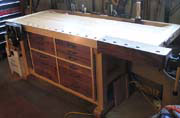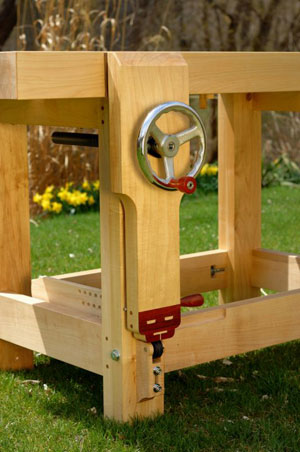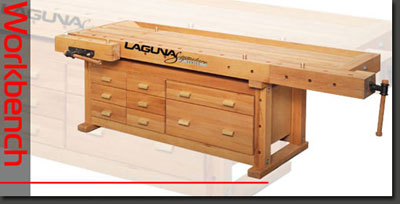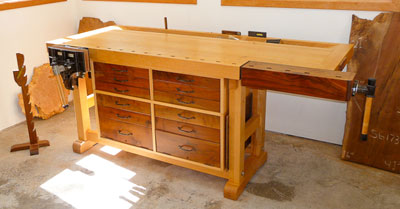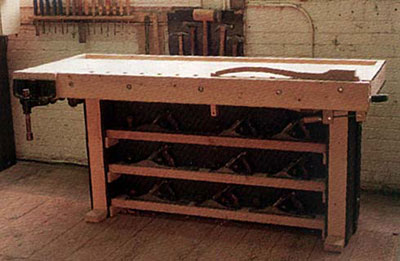
For many of us, our workbench is more than just a piece of shop furniture. It is the central hub of our workspace, designed to both support and secure wood parts while we attack them with tools. More than that, our workbenches tend to be a statement about who we are as woodworkers, reflecting our types of projects, our styles of work and even our personality.
Because of that, building one’s own workbench is a seminal activity for many, and even those who prefer to buy workbenches put a lot of effort into deciding exactly what belongs in the shop. Not surprisingly, there are Internet sites devoted to both building and buying workbenches. Foremost among these is Workbenchdesign.net, the brainchild and pet project of woodworker Tim Celeski. This is the place to go for everything you ever wanted to know about workbenches, and quite a few things you never thought to ask.
“My first foray into woodworking,” recounts Tim, “started in October of 1996 after reading an article on how to build a workbench in one weekend. It was such a clever design that I became enthralled with it. I probably read through it a dozen times, and then set out to build this workbench. All I had was a chop saw and a drill, and that bench became my first woodworking project. It took two weekends, but it was worth it.
“Over the next two years, I started dreaming about building a professional grade workbench. For my day job, I was working as a graphic designer. However, I’d been doing the usual Christmas gifts and projects out of magazines, so I had acquired more woodworking experience. In 1999, I started building my second workbench. By the time I finished it, about a month later, the process of building it gave me the confidence to become a professional woodworker, something I actually did about a year later.
“Once I finally built my dream bench, I set about creating a website to explain the process that I went through. That included decision-making, design and construction of workbenches. For many woodworkers, building a workbench is a rite of passage, and I wanted to help them out. It was my way of paying back to those who taught me.
“The site went up in 1999, and soon people started contacting me asking about plans and suppliers. By then I had a large collection of woodworking books and plans. I started adding links to plans that I owned or reviewed and regarded as worthwhile and valid. If it’s on that site, I’ve checked it out and it has passed muster. Though this website is basically a hobby, I do have one site sponsor, Laguna Tools, who help offset the cost of keeping the website alive.
“Not surprisingly, the site started to grow. I now get about 5,000 visitors a day, and have had over 4,000,000 visitors over the years. If you do a Google search for ‘workbench plans,’ the first non-sponsored spot is this site. Because it is the most highly trafficked workbench site on the net, I feel a responsibility to keep it current and fresh. I’m always keeping my ear to the ground about new ideas and plans regarding workbenches.
“At the moment, I am in the process of totally redoing the website. The new version will be easier to navigate and will have a stronger blog area. A few months ago, I added a Twitter feed. It’s a timely way to keep my readers informed, since I am currently in the process of designing three new workbenches.
“Of course, other peoples’ work also shows up on the website. Richard Maguire’s outstanding and robust benches are represented, as is Frank Klausz’s stunning workbench. In addition to build it yourself plans, there are also links for those who would rather buy than build.”
In short, it is the quintessential website for those seeking a workbench, whether you need plans, parts, advice, or even the best sources to buy an already built bench. Tim’s not one to rest on his laurels, though, and he has plans for another website as well.
“There are two big rights of passage for woodworkers,” he explains. “One, as I said, is building your workbench. The other is designing and setting up your shop. With that in mind, I am working on creating a sister site, similar to this one, that will be dedicated to designing and setting up your dream shop.
“Down the road, I’m hoping to teach a course at the Port Townsend Woodworking School on creating a workbench. Building a workbench gets people inspired, and teaching them to do that gives me a lot of satisfaction. That, in a nutshell, is why the website exists.”
